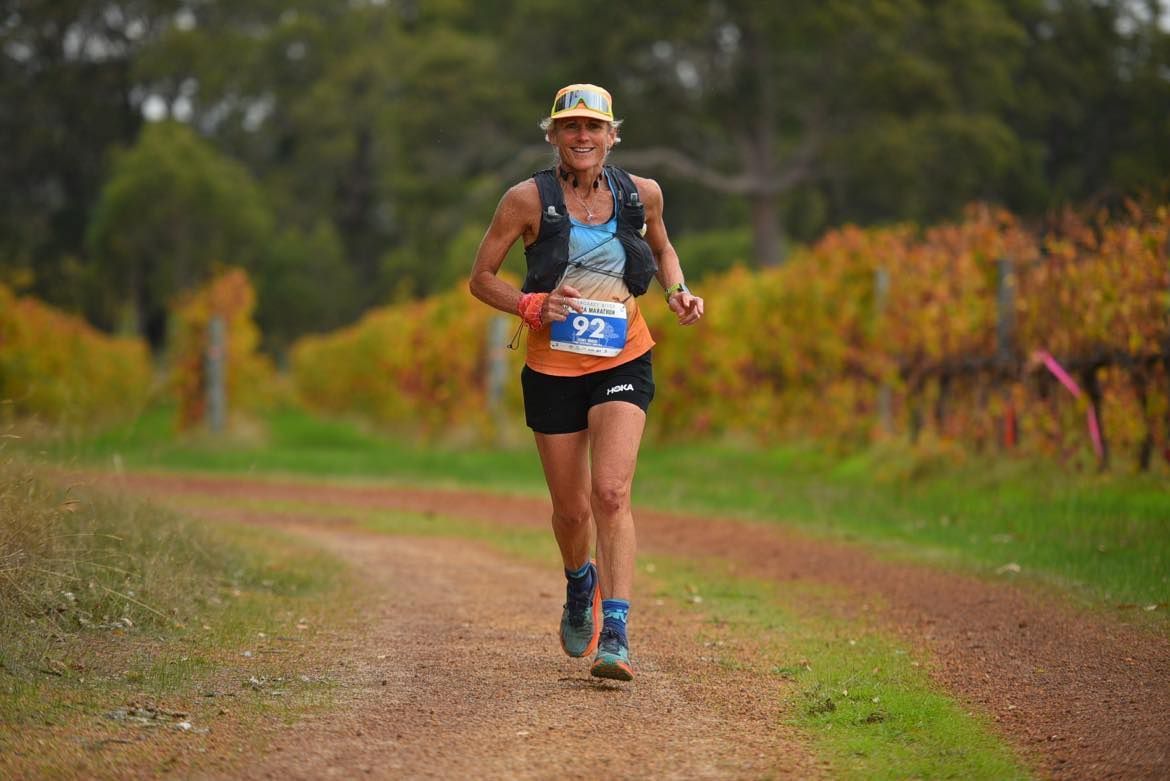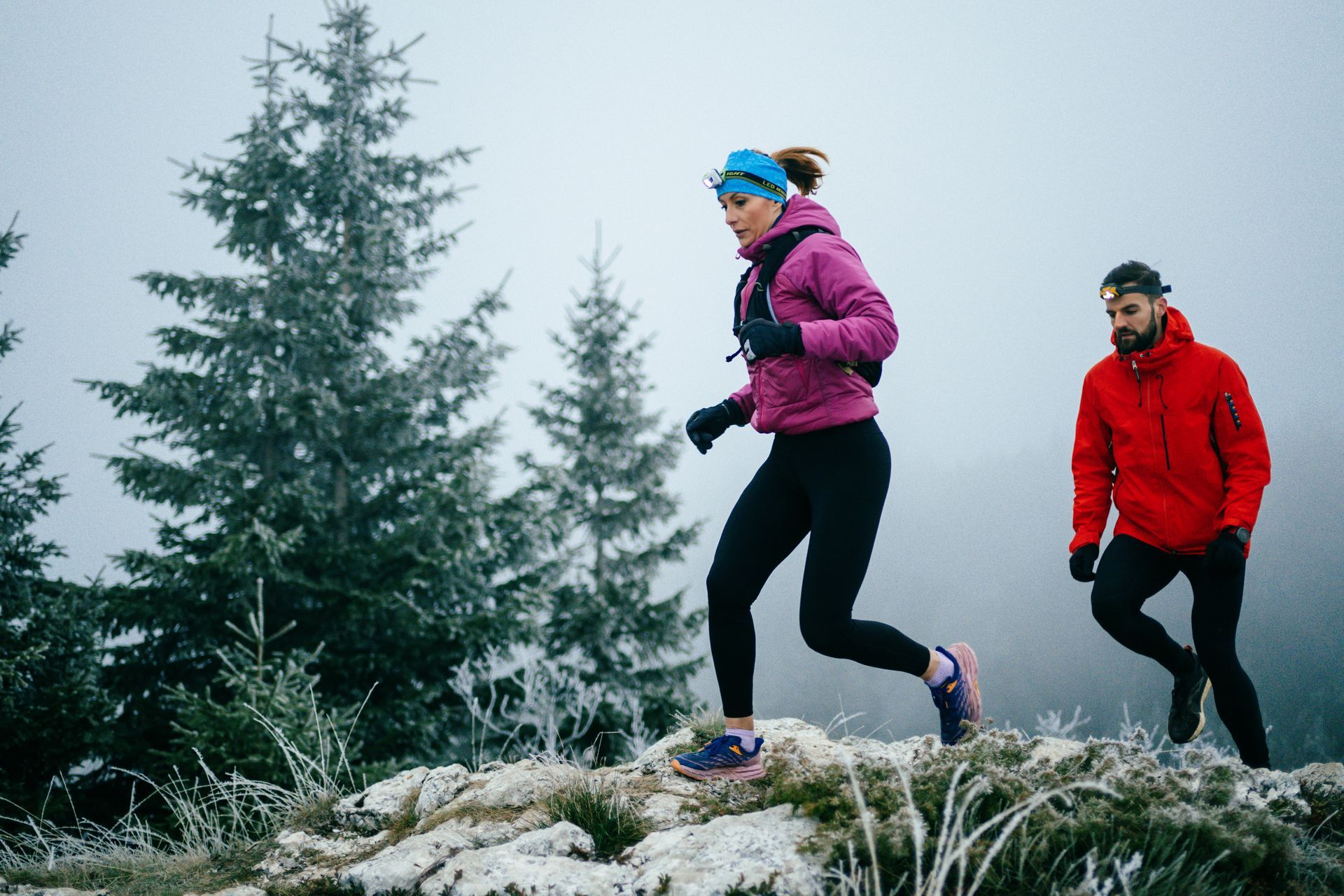
COACH’S CORNER - Hills are like brussel sprouts by Jenny Morris
jenny morris from ** says hills are like brussel sprouts: we know they're good for us, and that's the only reason we like them

Running hills everyday is a great way to build leg strength that translates into the power you need for speed and endurance. Does that mean that because you live on a hilly route or in a hilly area that every run should be a hard workout? There’s a difference between uphill workouts and easy runs with hills.
How do hills improve running?
Running hills engages your fast twitch muscle fibres and forces you to raise your knees higher than usual when driving forward. This extra exertion means you will build more muscle and increase your strength. Most runners should know that lifting your knees higher and increasing your step cadence is crucial for running form. The good thing about hill running is that it makes you do this unconsciously.
Do hills make you faster?
Training on hills improves leg muscle strength, quickens your stride, expands stride length, develops your cardiovascular system, enhances your running economy and can even protect your leg muscles from soreness. In a nut shell; hill running will make you stronger, faster and a healthier runner. I always say “hills are like speedwork in disguise”
Does running hills build glutes?
Running inclines whether on a treadmill or outside, is a form of resistance training. It builds muscle in your calves, quads, hamstrings and glutes. You’ll also strengthen your hip flexors and Achilles’ tendons. Hill running strengthens these areas more than running on flat surfaces.
How can running hills be fun?
Knowing how to run hills can make your workouts way more interesting than endless loops around a track or running on a treadmill. Consider what is on your doorstep or a short drive away. Meet with friends for a coastal track , harbour headlands or mountain run. The ability to connect with others for this type of run allows more social interaction, maybe even some chats whilst hiking the hills. In my opinion isn’t this why most of us Ultra runners choose the longer stuff?
How to train for hill running without hills?
Not all of us live in an area that provides the incline in training that we may need in an upcoming race. Let’s be honest, where in Australia can we run that can replicate the hills of UTMB? Some people are lucky to live in parts of the country with natural inclines all around them, however if you don’t you can still train for hill running. Here’s a few suggestions.
Using a steep incline on a treadmill
This may not be the best approach but is easiest to control and requires minimal effort or travel. Your coach can provide treadmill workouts that gain sufficient benefits from varying the incline on a treadmill during a workout.
Here’s one I like to suggest:
- Easy run Incline @ 2% x 10 mins – 2km
- 3min hill effort @ 12% incline
- 3 min recovery @ 4% incline and repeat this 3 or more times
- Easy run Incline @ 2% x 10mins – 2km
Hill treadmill workouts are endless and there can be so many variations of the above workout. They can also be less mind numbing than running a consistent gradient for numerous kilometers.
Finding a footbridge – There may be a footbridge close to where you live which offers a reasonably steep incline which is similar or can replicate running up a hill. You can vary the pace or repeats to make it more challenging too.
How to get better at hill running?
OK, glad you asked. Let’s start by finding an appropriate hill- something around 9 degree gradient and long enough to run 30 seconds or longer.
Start the hill session with a light easy run to warm up. This will get your blood flowing and loosen your muscles. Once you have completed the warm up try out one of the following sessions:
Hill sprints – From the base of the hill simply run at a hard effort upwards for at least 30 seconds or up to 90 seconds. Once you have reached the top, turn around and jog or walk back to the bottom, repeating a number of times.
Hill pyramids – Another way to train up hills is to do pyramids. You could start with a 30 second effort, reach the top, turn around, then increase to 45 seconds, then increase to 1 minute and so on. You can also apply the same to the downhills reducing the sprinting time as you decrease the intervals. Being good at downhill running is important as well.
Mixed intervals – Hill running isn’t all about “Sprinting” it’s sometimes good to mix up the effort. An example could be 2 x intervals at a fast hike pace, 2 x intervals at an effort pace, then two intervals at an easier pace. Each of these hill workout styles are triggering different muscles and will build strength in different ways.
As I briefly touched on above, the other important aspect of hill running is to apply some focus on downhill running. You might swap the hill efforts around. Sometimes the focus will be on the effort uphill , sometimes the focus will be on the effort downhill. A session I like and use often for my athletes is this one:
- 2km easy run to base of your hill
- 500m effort up / easy down
- Repeat x 4
- 500m easy up / effort down
- Repeat x 4
- 2km easy CD to finish
Once you know how to get better at running hills, you should start to see a big improvement in your overall performance. So start to think outside the box, if you see a hill on your next run, set yourself a challenge. Then try and beat it over the next few times you run that hill.
Lastly, you should always enjoy your running and mixing up your sessions can bring different challenges but also these can be more satisfying and feel like you have really worked hard. Either way, keep having fun and smile while you are running up that hill. It works for Kipchoge.
Jenny Morris is a Level 2 coach at Team J, based in NSW. She has coached multiple runners to 100km and milers and all the distances leading up to these. Jenny predominantly excels in the ultra field, including the female winner at the inaugural Bondi to Manly Ultra in 2022.iF YOU WOULD LIKE MORE INFORMATION ON BEING TRAINED BY Jenny, CLICK THROUGH HERE TO OUR AURA ENDORSED COACHES PAGE.









